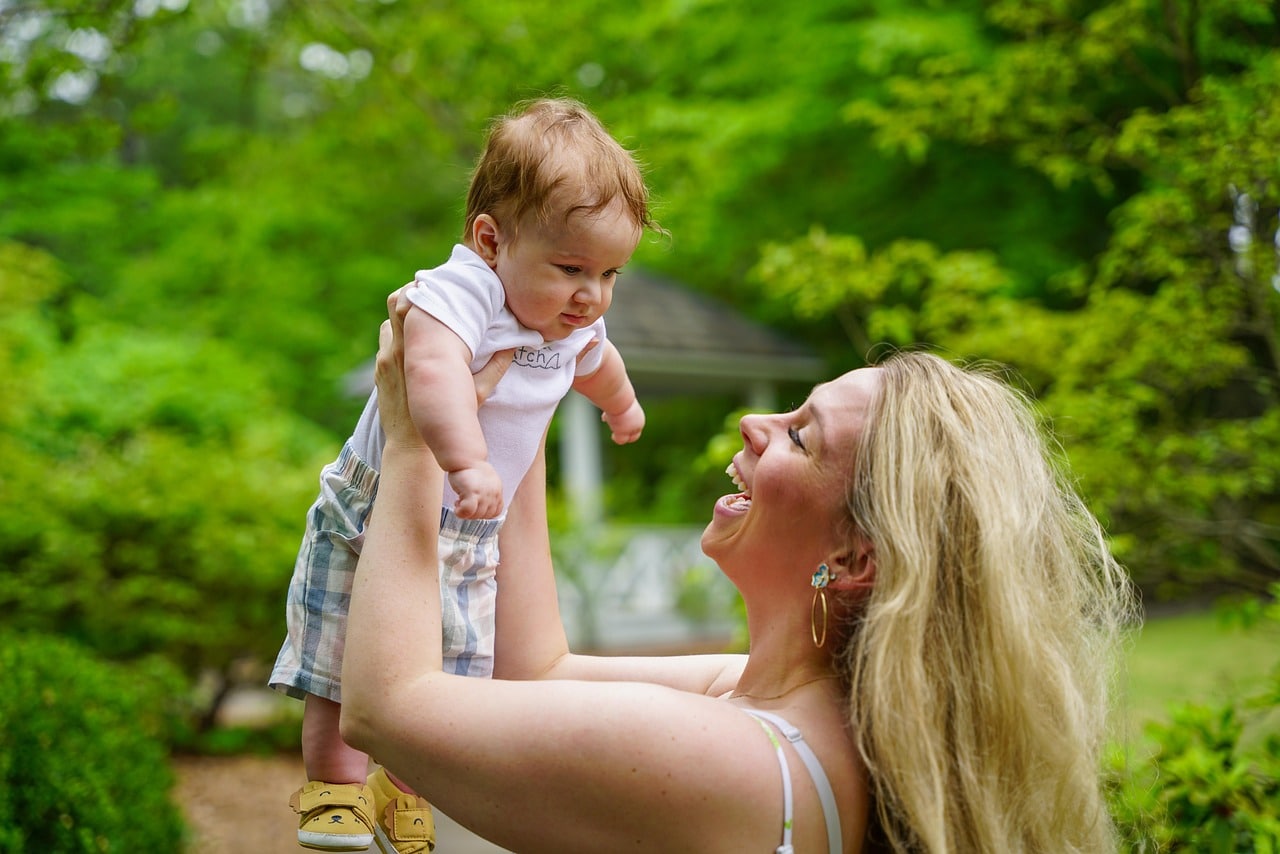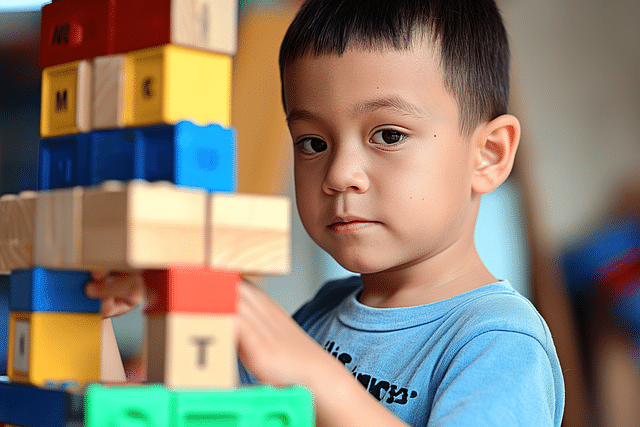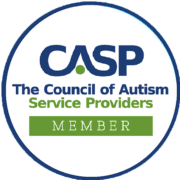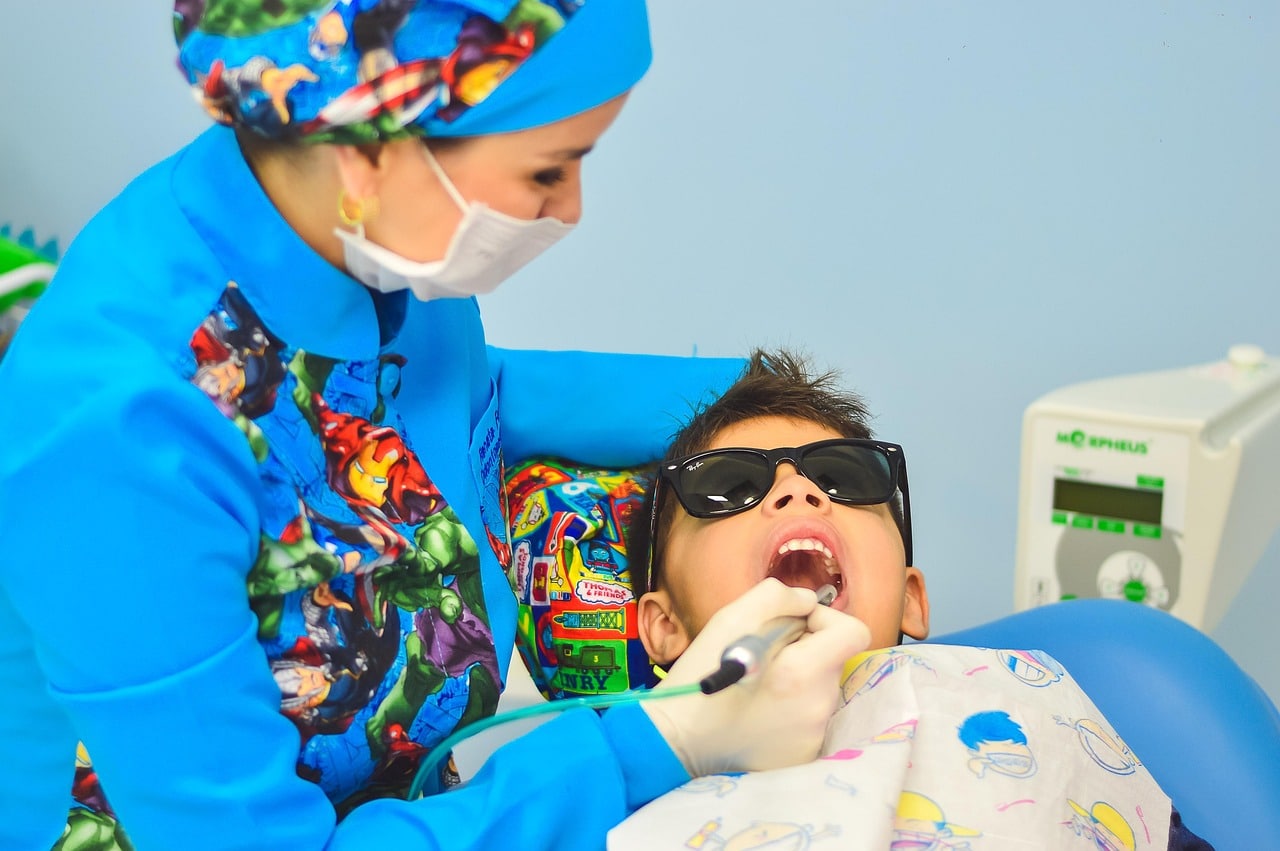Do Babies with Autism Smile & Laugh? Insights Into Early Behavior
Do autistic babies smile and laugh? This frequently asked question stems from the fact that how and when a child smiles and exhibits other developmental milestones can be early indicators of autism. Of course, differences in smiling and other social gestures alone are not diagnostic signs of autism – but they are worth exploring.
In this article, we’ll consider smiling and other frequently-observed symptoms of autism in babies and toddlers, discuss the benefits of early intervention for young learners and their caregivers and families, and share about our program for ages three to six: Building Bridges.
Reflexive vs. Social Smiling
First let’s look at the different types of smiling and how they are expressed in neurotypical and neurodivergent babies. All babies may smile reflexively in their sleep or in response to pleasant stimuli, such as a warm touch. Social smiling, however, is in response to human interaction.
In neurotypical infants, social smiling develops by six to eight weeks. By month two or three, they typically smile in response to faces or voices, and around four or six months, laughter emerges as they react to lively interactions, like playing peekaboo or being tickled. The baby smiles, the caregiver smiles back, and this back-and-forth interaction reinforces social bonds.
Young learners with autism may not engage in this feedback loop or their expression of social smiling and laughter may be reduced, delayed or absent. These differences have the potential to be significant because social engagement, communication, and emotional connection are all areas that can be affected by autism.

Social Smiling and Autism
Autistic babies can both smile and laugh, but they may do so less frequently, differently, or in response to non-social stimuli compared to neurotypical babies. Smiling and laughing are both important forms of early social communication, and differences in how and when a baby engages in these behaviors can sometimes be early warning signs of autism.
- Less Socially Responsive Smiling & Laughing
Autistic babies may smile or laugh less frequently in social situations or may not do so in response to typical social cues. - Smiling & Laughing at Objects or Sensory Experiences
Babies with autism may smile or laugh at sensory inputs like spinning objects, flashing lights, or certain sounds. Their facial expressions may be more related to personal experiences rather than social interaction with others.
- Inconsistent or Unexpected Smiling & Laughing
Some autistic babies may smile or laugh at unusual times, seemingly unrelated to the environment. They may smile without making eye contact or laugh when alone rather than in response to social play. - Limited Reciprocal (Back-and-Forth) Engagement
Babies on the autistic spectrum may not engage in back-and-forth exchanges of smiles or laughter, making it harder for caregivers to interpret their social interest. - Delayed or Atypical Expression
Autistic babies may smile later or less frequently in response to people. Their laughter may sound different (e.g., high-pitched, monotone, or repetitive) and may occur less frequently or in unexpected situations.
Not all babies with autism smile or laugh less than others – all children develop at their own pace. Some autistic babies smile a lot but have other social interaction differences, such as limited eye contact, delayed gestures, or repetitive behaviors. Let’s look at what gestures infants with autism have and others that may present as they grow.
Other Signs of Autism in Babies & Toddlers
Many of the following communication differences, behavioral patterns, and sensory sensitivities can appear in children who are not autistic, but a baby or toddler who consistently shows multiple behaviors from the lists below may be a candidate for autism assessment.
Babies (0-12 Months)
Social & Communication Differences
- Limited eye contact with caregivers
- Does not respond to their name by 9-12 months
- Minimal or absent babbling (e.g., not making “ba-ba” or “da-da” sounds)
- Limited gestures (e.g., doesn’t point, wave, or reach to be picked up)
- Does not imitate sounds, facial expressions, or gestures
- Little to no interest in social play (e.g., doesn’t enjoy peekaboo or clapping games)
- Does not show or give objects to share interest
Behavioral & Repetitive Patterns
- Fixates on objects rather than people (e.g., staring at ceiling fans, spinning objects)
- Repetitive hand movements (e.g., hand-flapping, finger-flicking, unusual posturing)
- Rigid body movements (e.g., stiffening arms, rocking)
- Overly focused on parts of toys (e.g., spinning wheels instead of rolling the toy car)
- Resists changes in routine (e.g., extreme distress over minor changes)
- Limited exploration of new objects or repetitive play with the same items
Sensory Differences
- Unusual sensitivity to touch, sound, or light (e.g., avoids cuddling, covers ears)
- Under-reacts or overreacts to pain or temperature changes
- Avoids certain textures or has strong food preferences

Toddlers (12-36 Months)
Social & Communication Differences
- Delayed speech (e.g., no words by 16 months, no two-word phrases by 24 months)
- Limited gestures (e.g., does not point to show interest or request things)
- Does not engage in back-and-forth play (e.g., rolling a ball, imitating actions)
- Avoids or makes fleeting eye contact with caregivers and peers
- Prefers playing alone rather than engaging with other children
- Rarely seeks comfort from caregivers or does not respond to affection
- Repeats words or phrases (echolalia) instead of using them meaningfully
Behavioral & Repetitive Patterns
- Hand-flapping, rocking, spinning, or other repetitive movements
- Fixates on specific objects or topics (e.g., memorizing numbers, letters, or shapes)
- Resists change in routines (e.g., tantrums over small changes in daily activities)
- Lines up toys instead of playing with them in an imaginative way
- Uses toys in unusual ways (e.g., flicking a toy instead of playing with it normally)
- Displays rigid behaviors (e.g., insists on doing things the same way every time)
Sensory Differences
- Over- or under-reacts to sensory input (e.g., covers ears for loud sounds, loves deep pressure)
- Avoids certain food textures or has an extremely limited diet
- Enjoys spinning, jumping, or seeking out intense sensory experiences
What To Do If You Have Concerns
Every baby’s developmental journey is unique. Trust your instincts. If you notice differences, seeking guidance can provide clarity and access to helpful resources, such as the services and programs at A Bridge to Achievement. We engage learners with autism ages 3 to 21+. Your family can grow with ours – we’re here for as long as you need us.
Prepare for an autism assessment by tracking and documenting behaviors, noting when and how often they occur. Keeping a record of your baby or toddler’s milestones can be helpful, such as smiling, babbling, gesturing, and responding to their name. Taking short videos of behaviors can also provide useful information for a pediatrician or specialist.
Pediatricians typically conduct screenings at well-child visits (9, 18, and 24 months). If concerns persist, the doctor may suggest a formal autism evaluation. Some practices, including A Bridge to Achievement, accept new clients without a referral – you simply request services.

Early Intervention: Building Bridges
Research shows that early intervention can significantly help to build foundational skills in communication, social interaction, emotional regulation, behavior, and adaptive skills during critical stages of brain development. By addressing developmental differences early, children with autism have a greater chance to thrive – improving long-term learning, increasing independence, and reaching their full potential.
Learn more about early intervention for your learner by checking out our preschool alternative and Kindergarten readiness program, Building Bridges. We offer this one-on-one and small group learning program at our Pineville, University and Winston-Salem locations and accept BCBS, MedCost, and Medicaid. Contact us with questions or go ahead and request services – support starts here.





